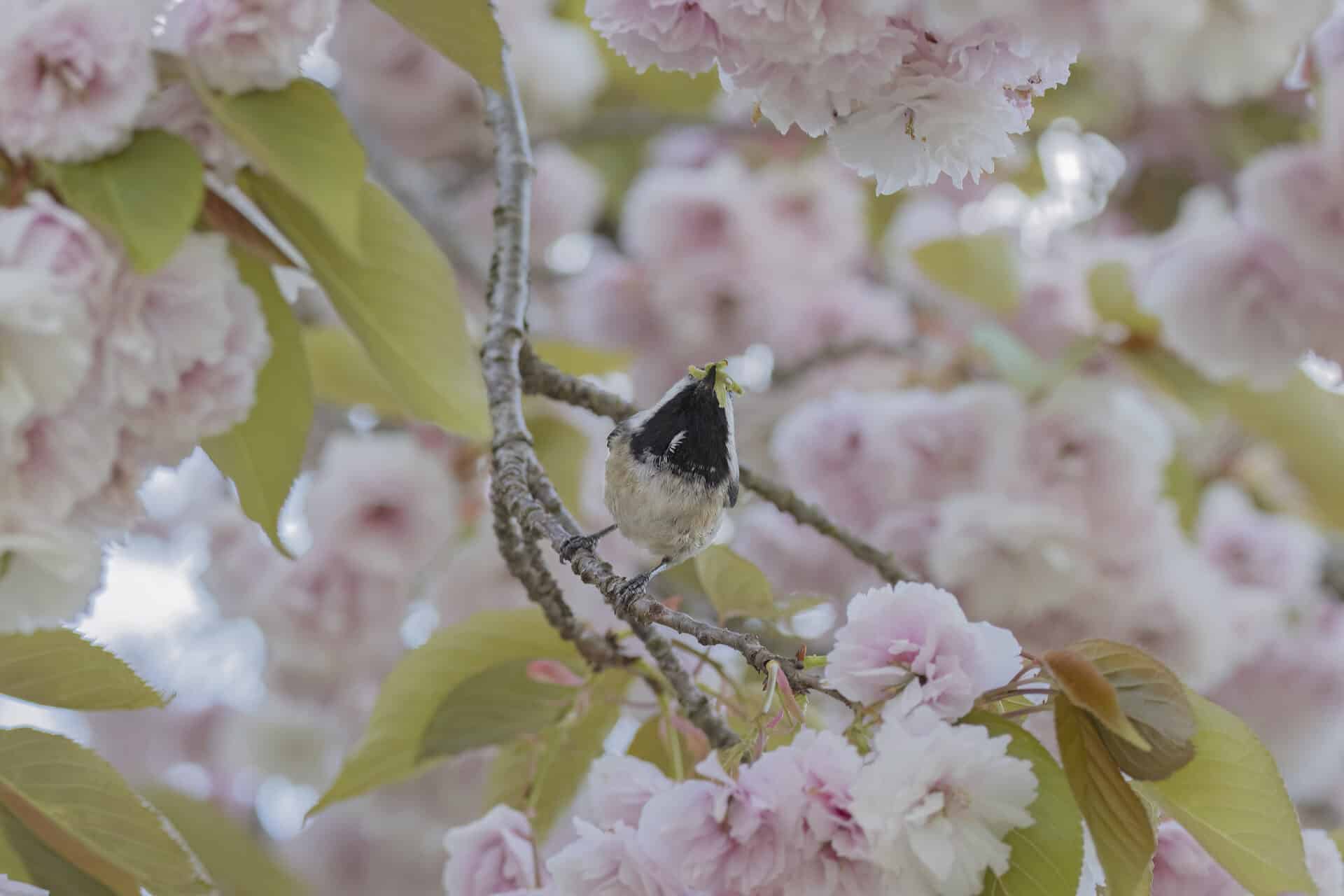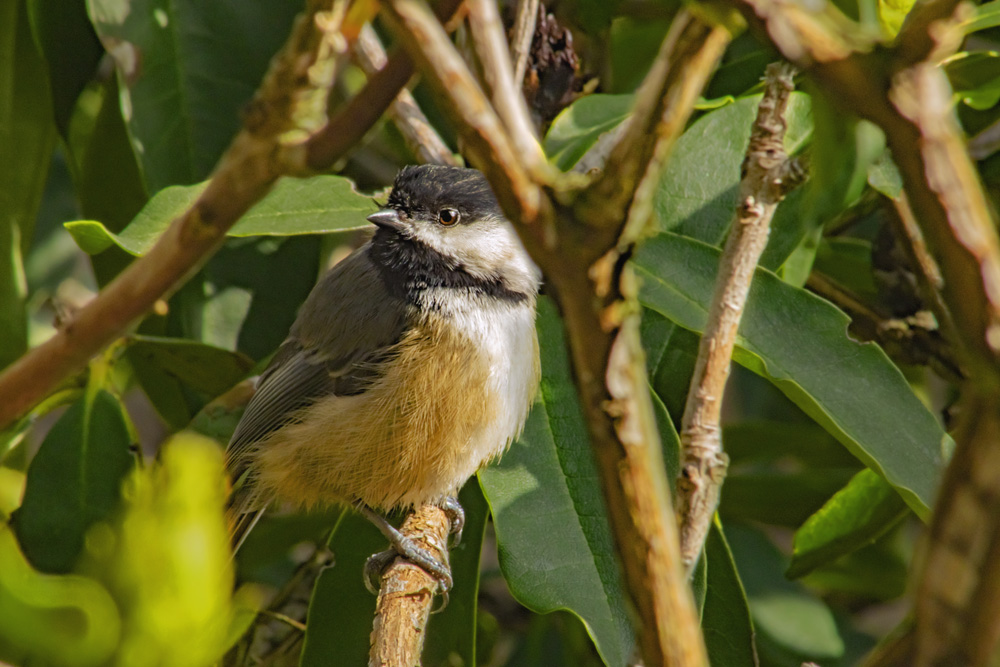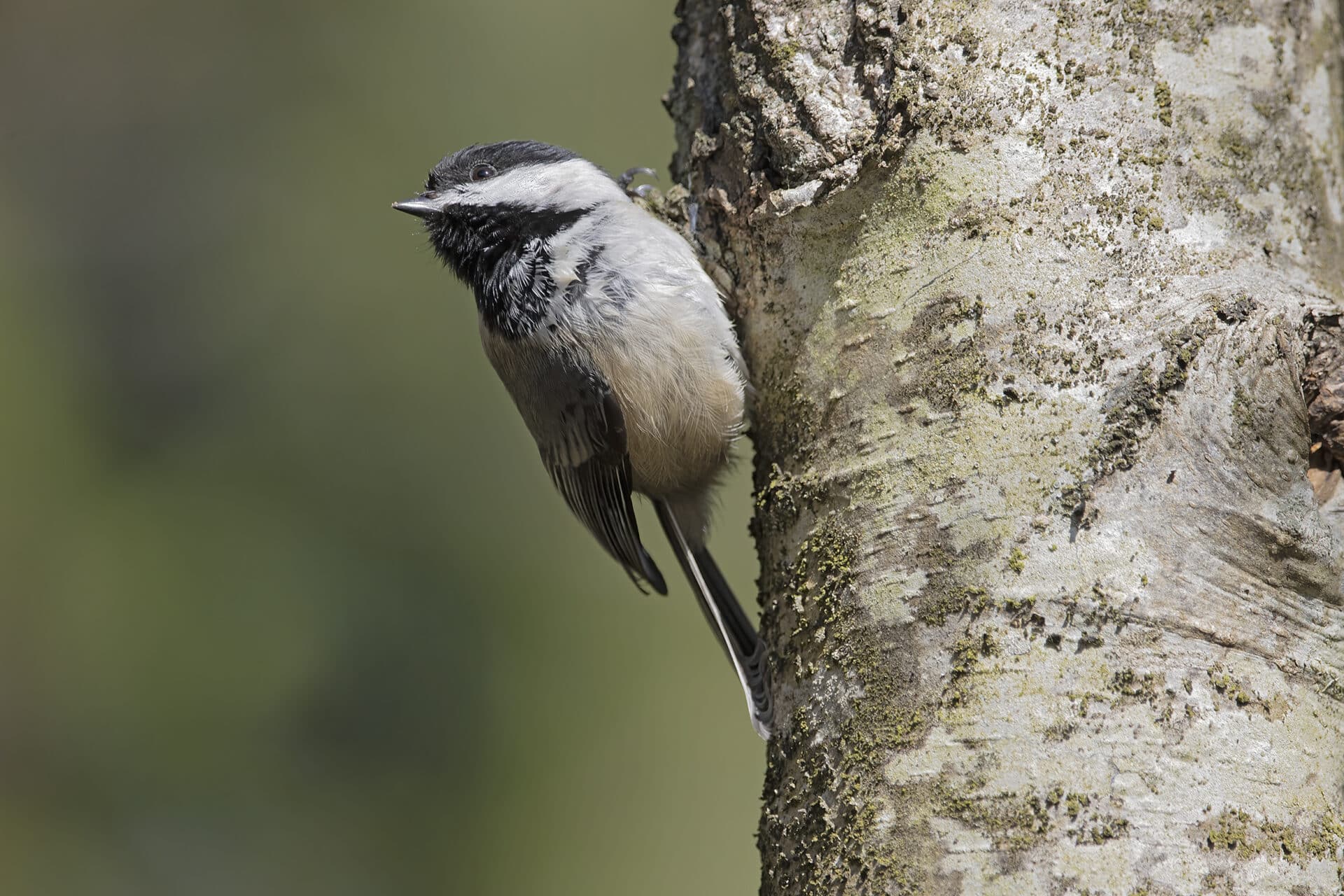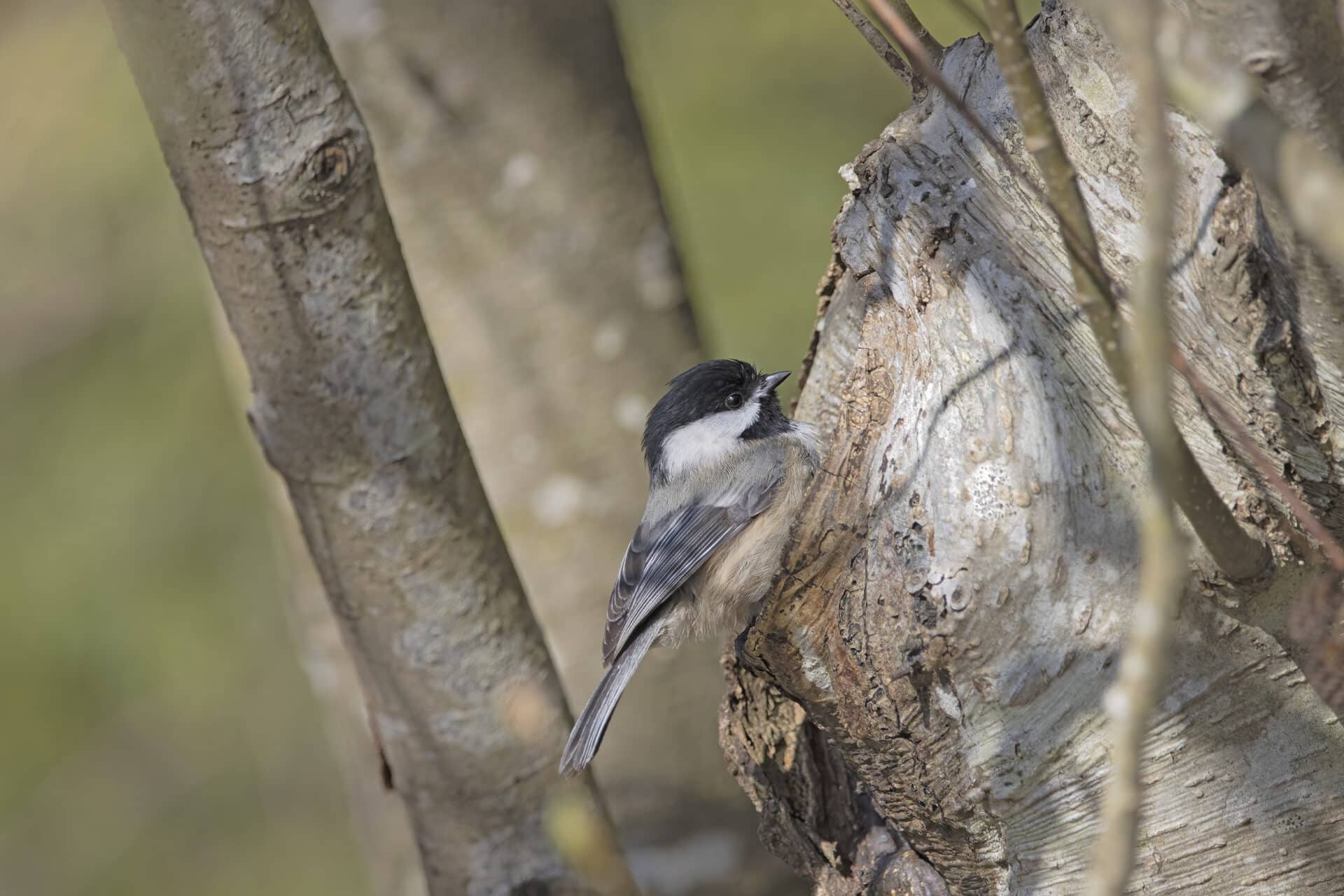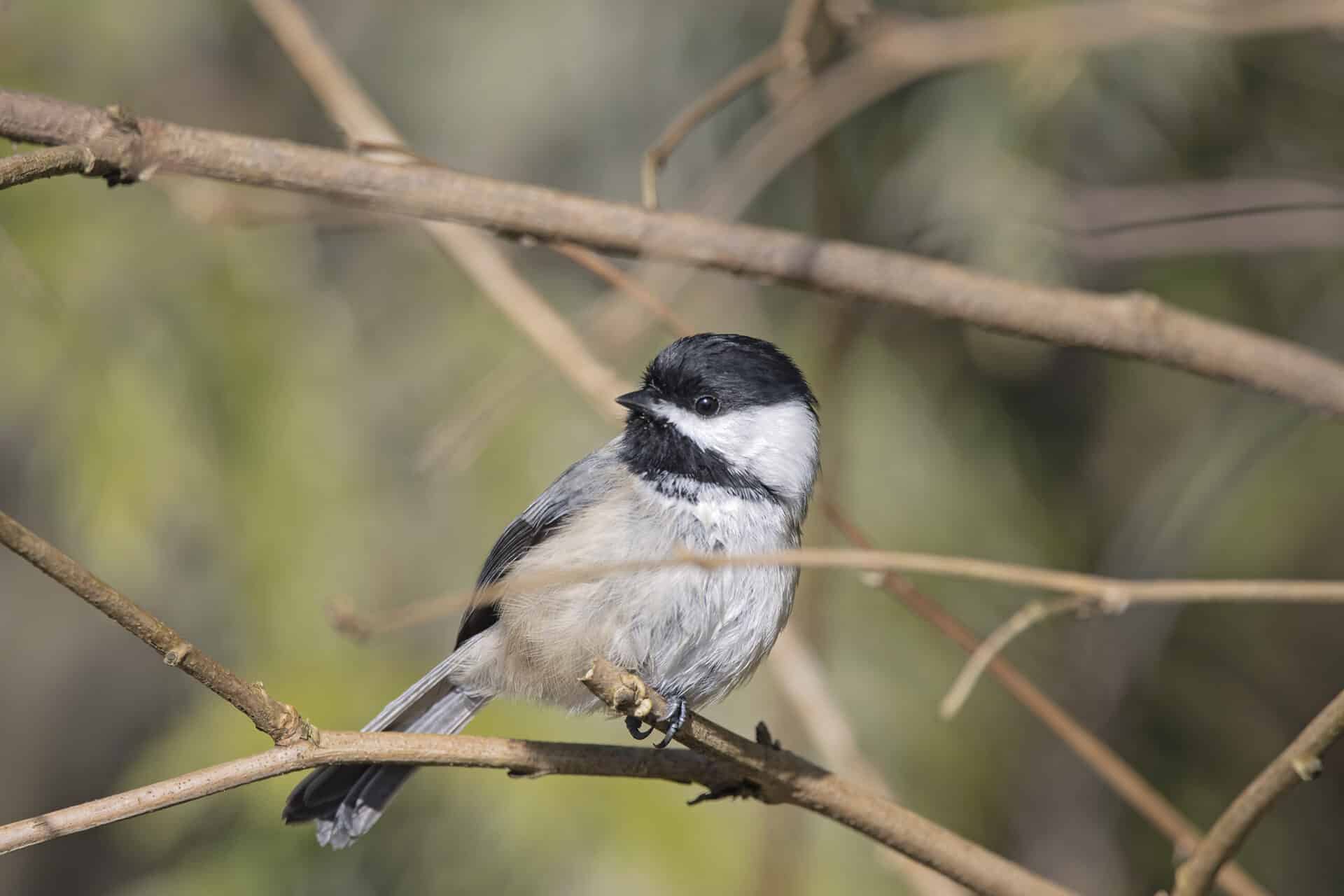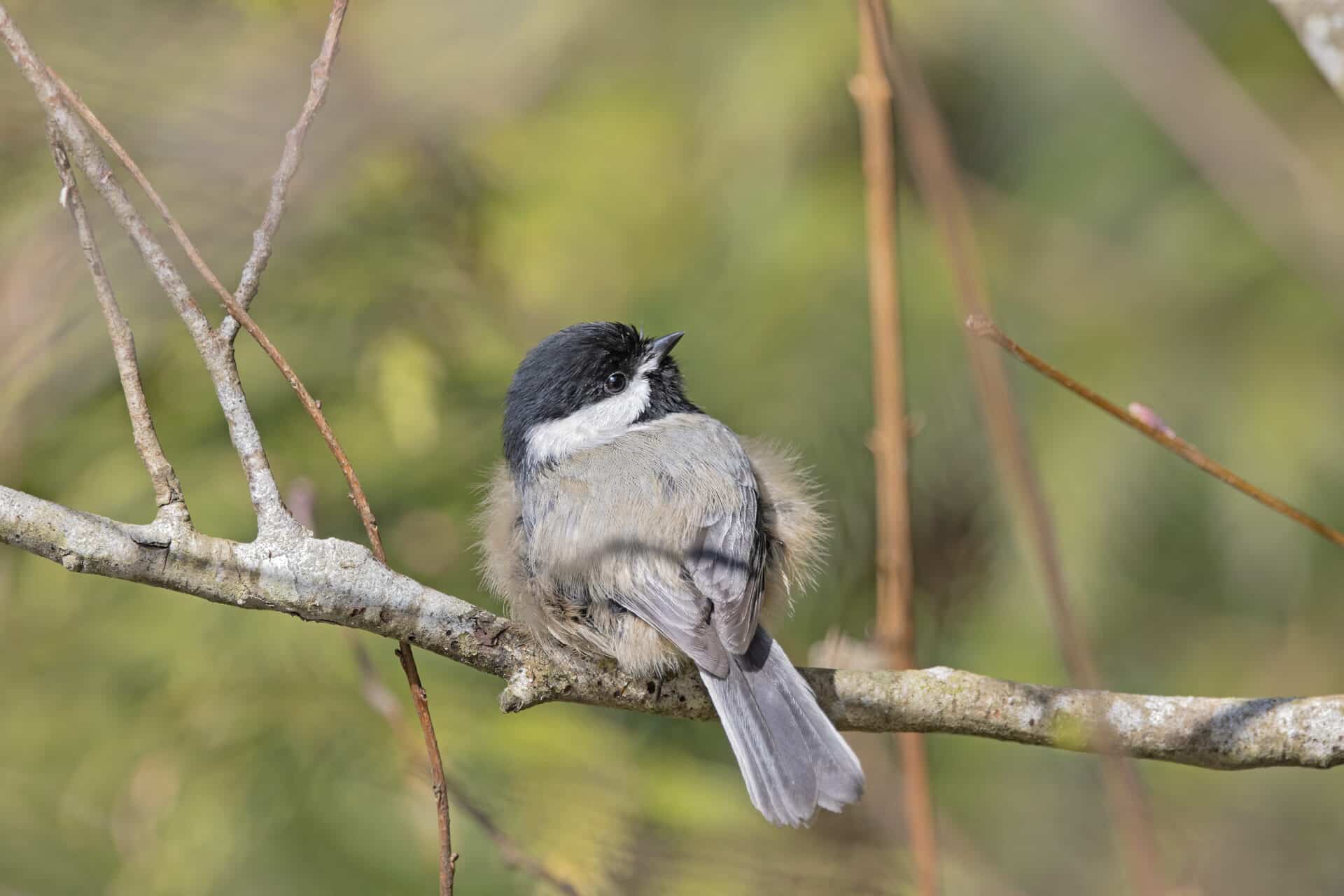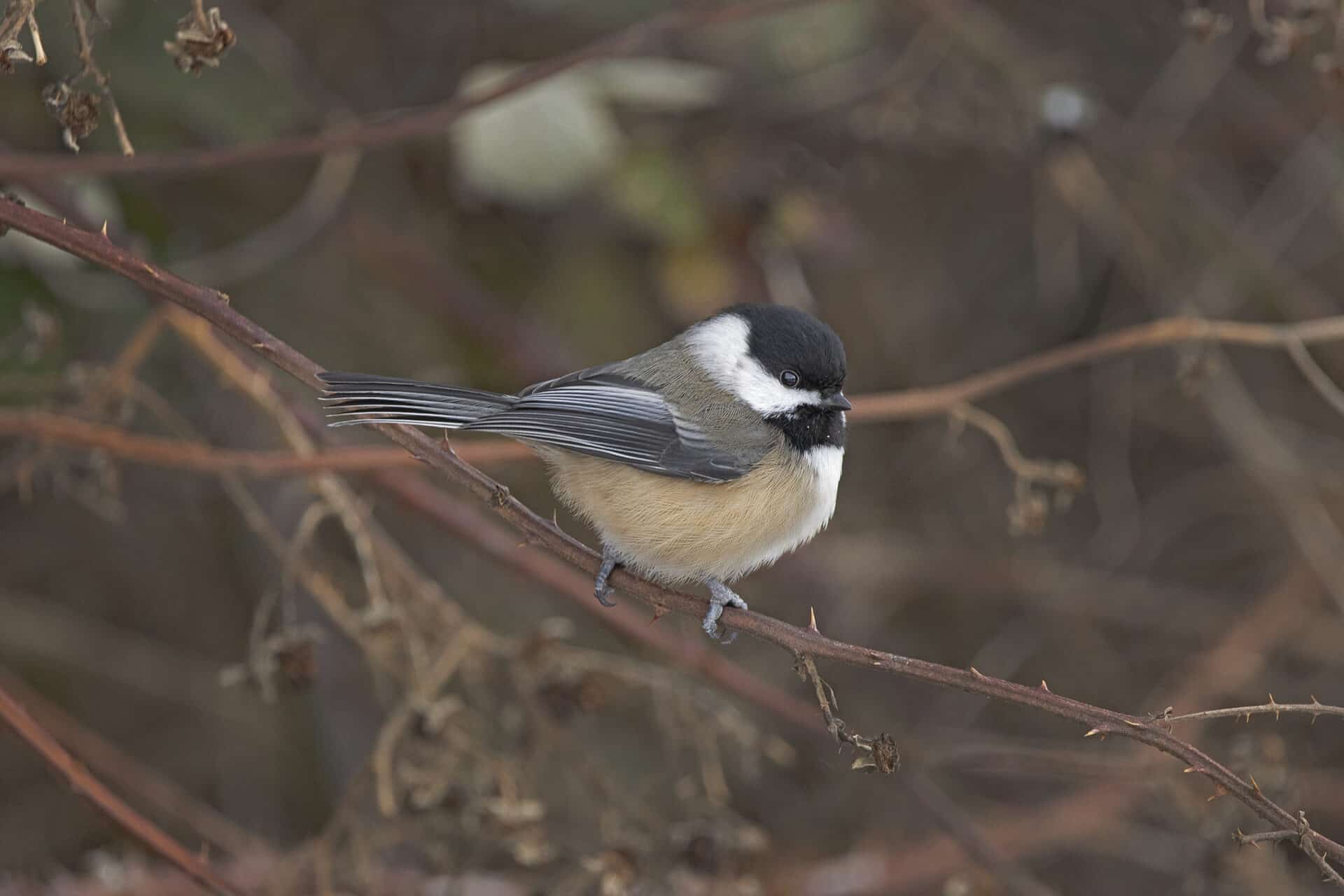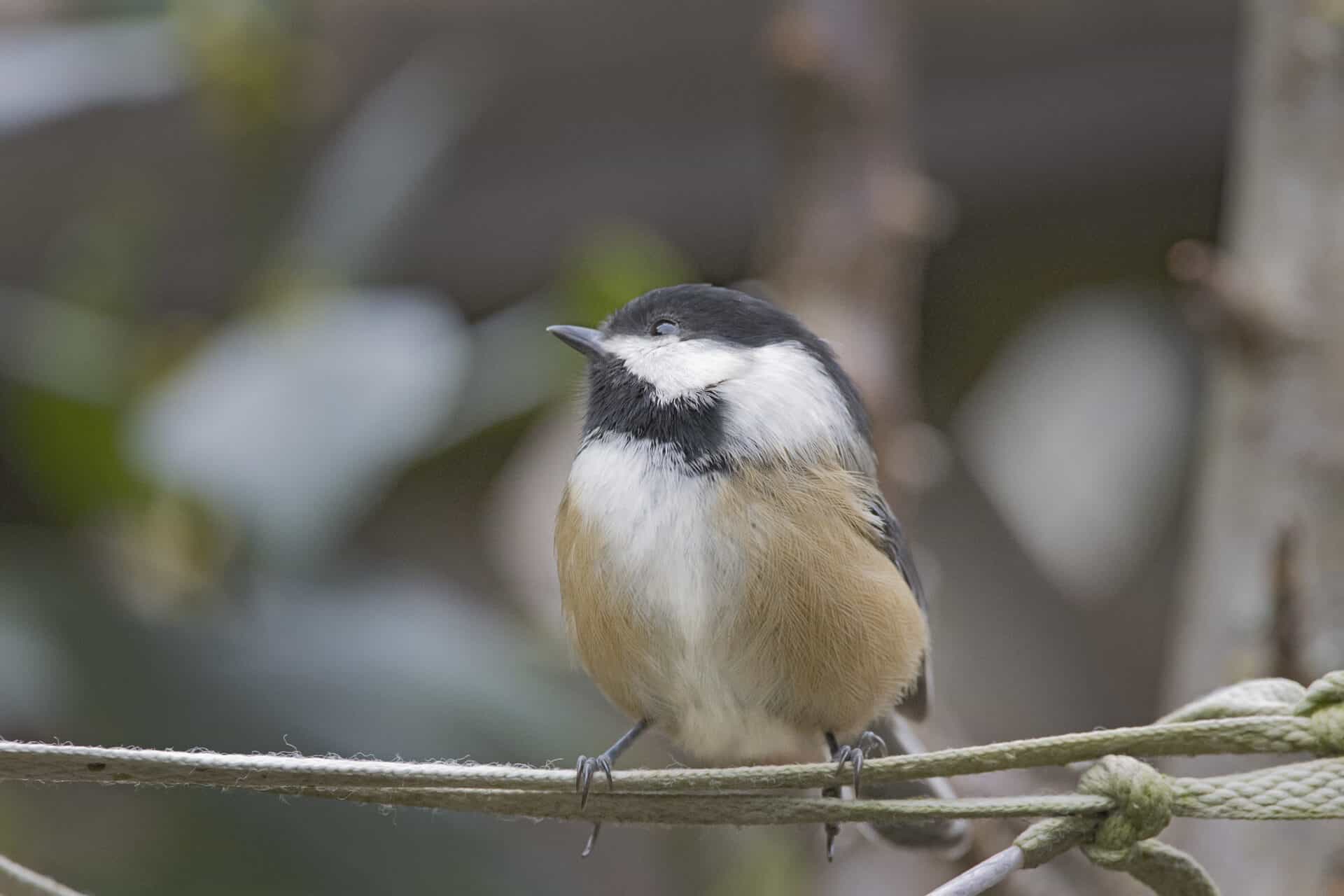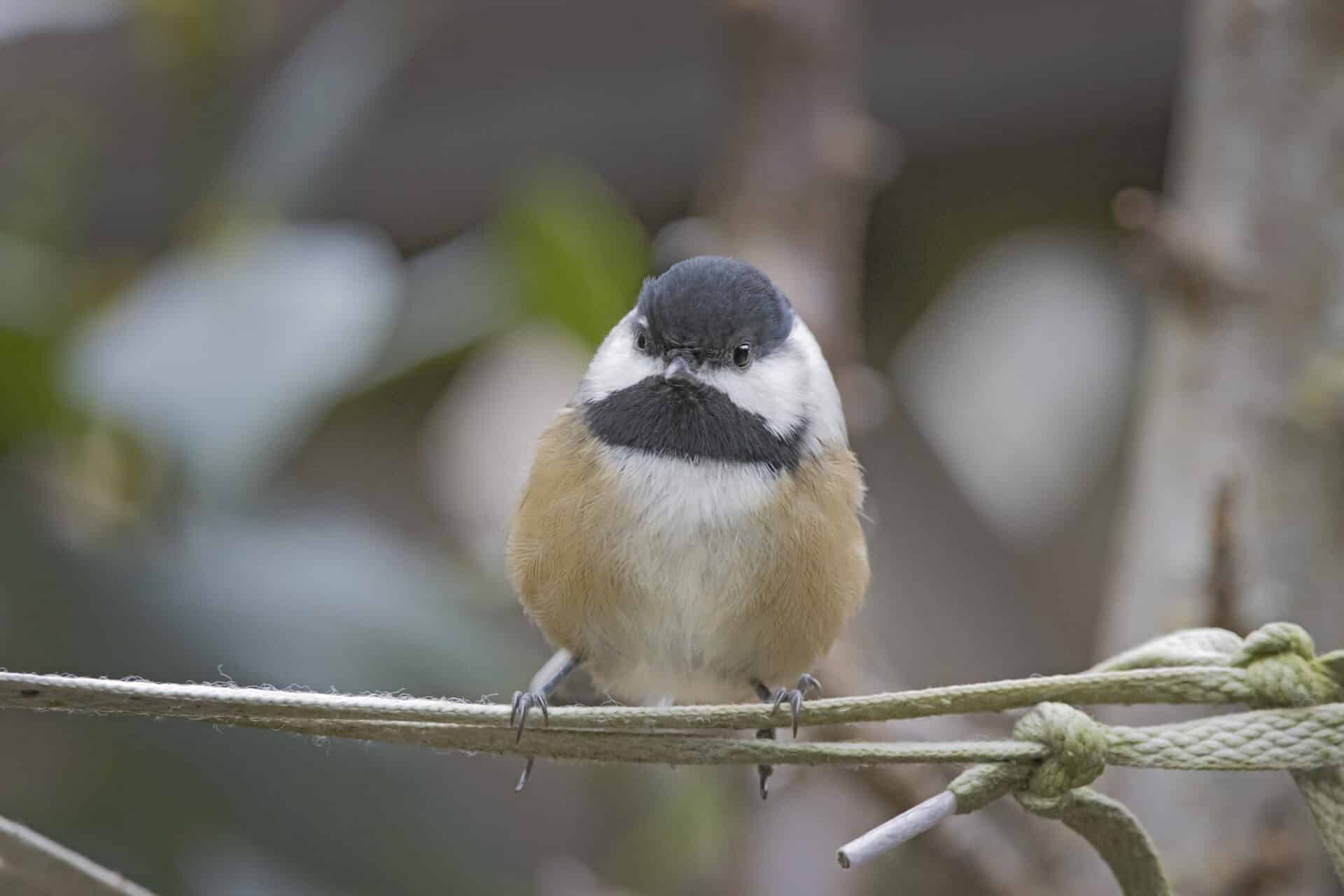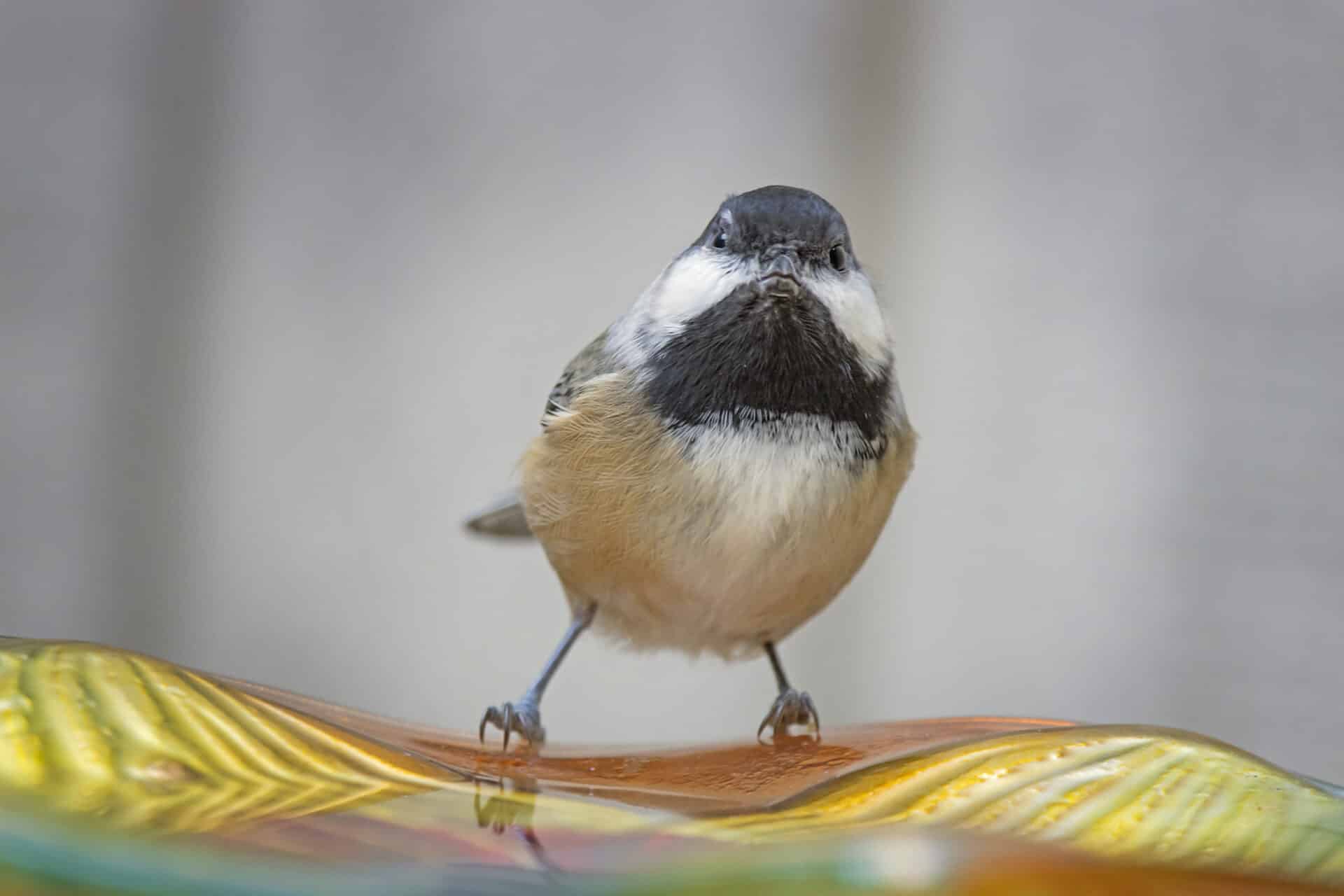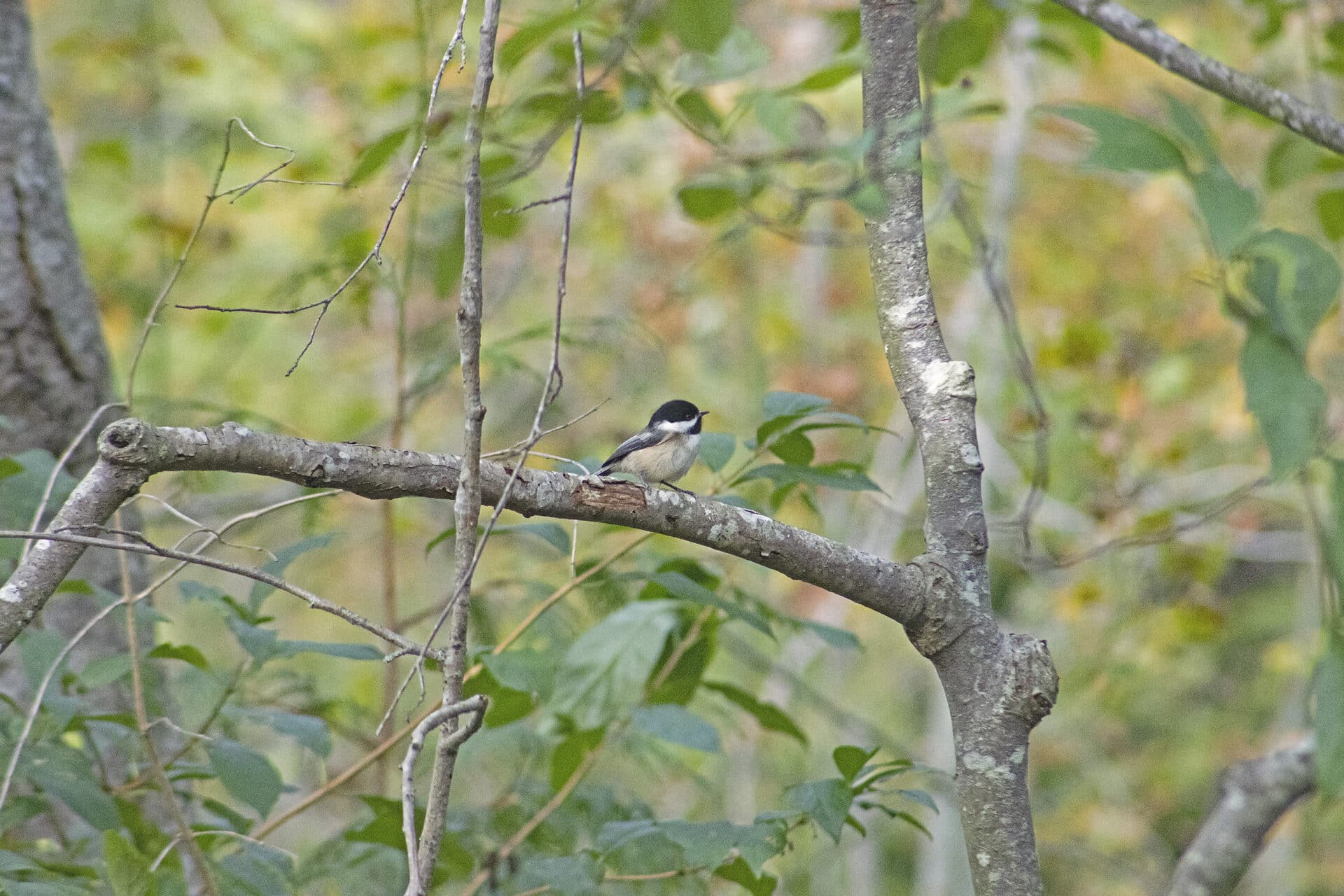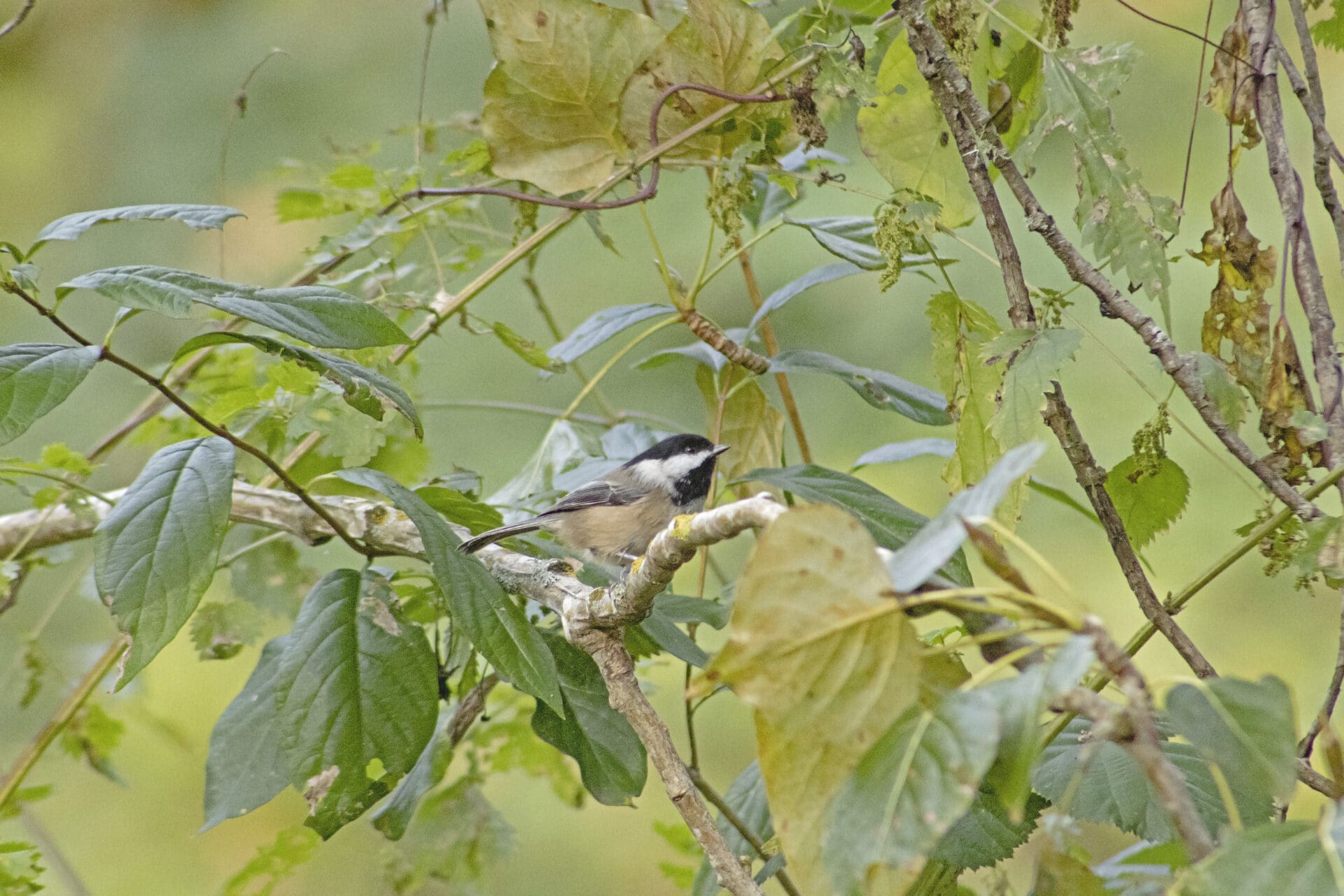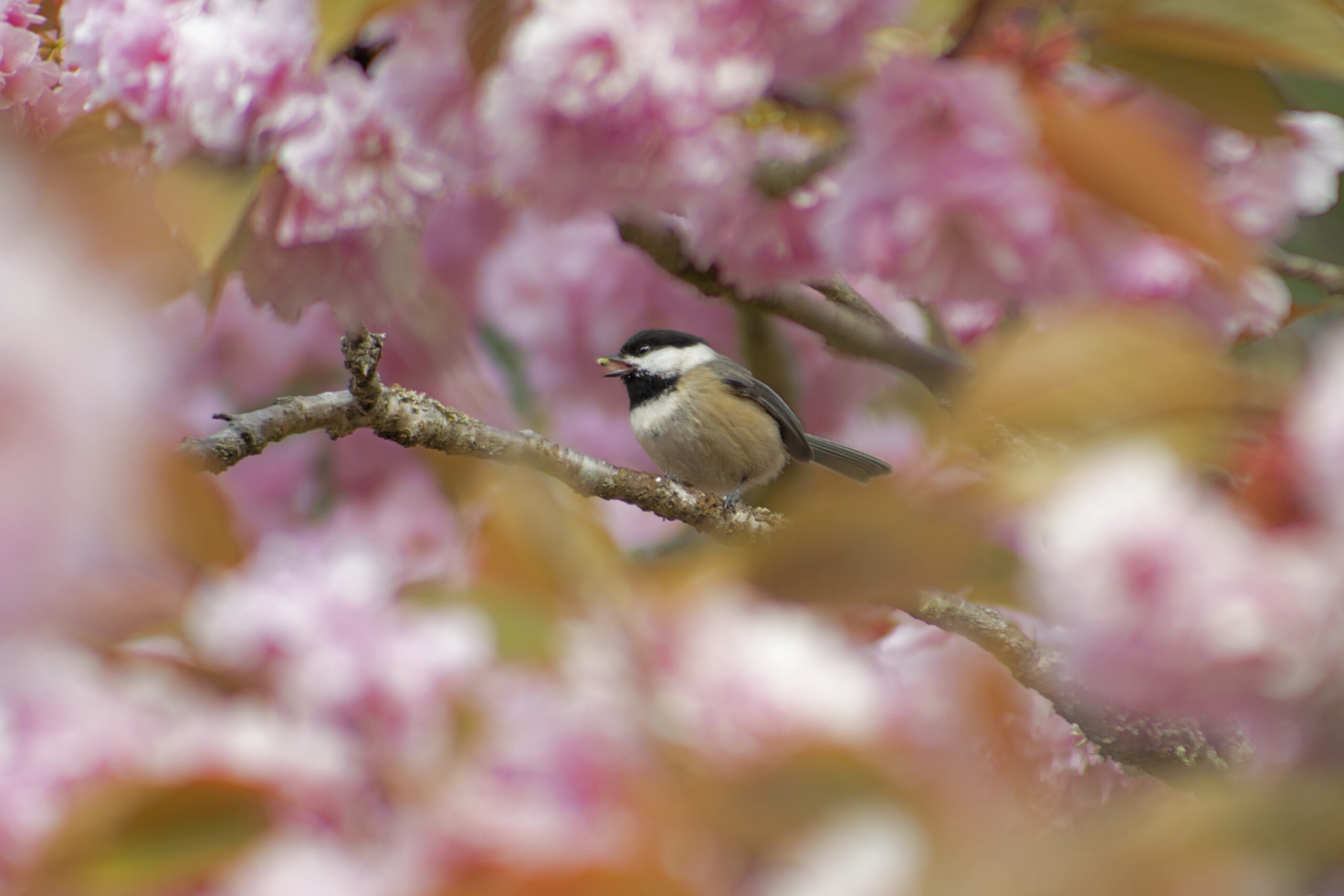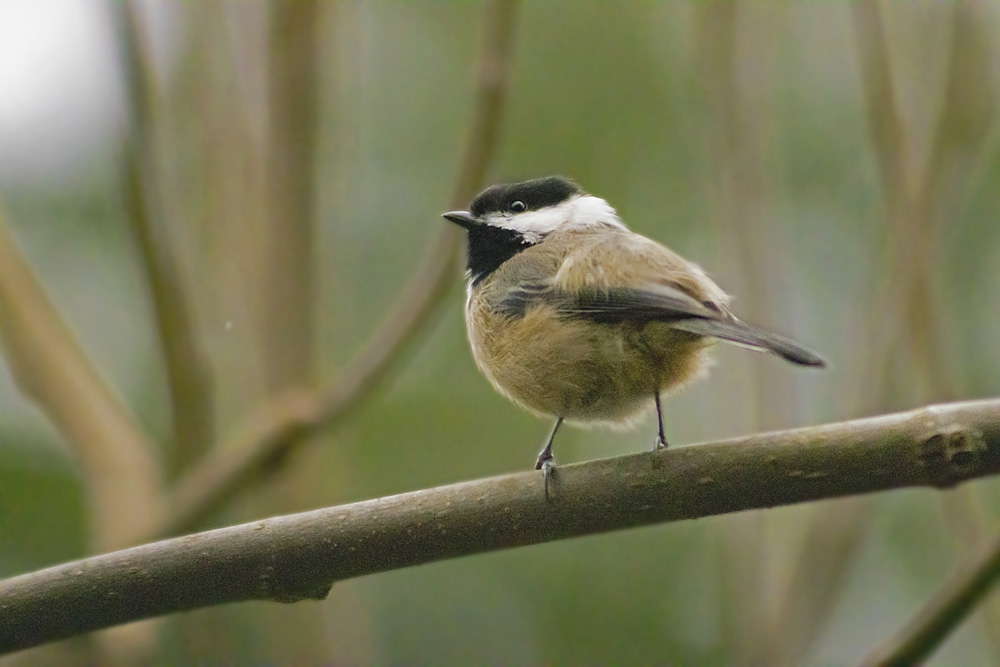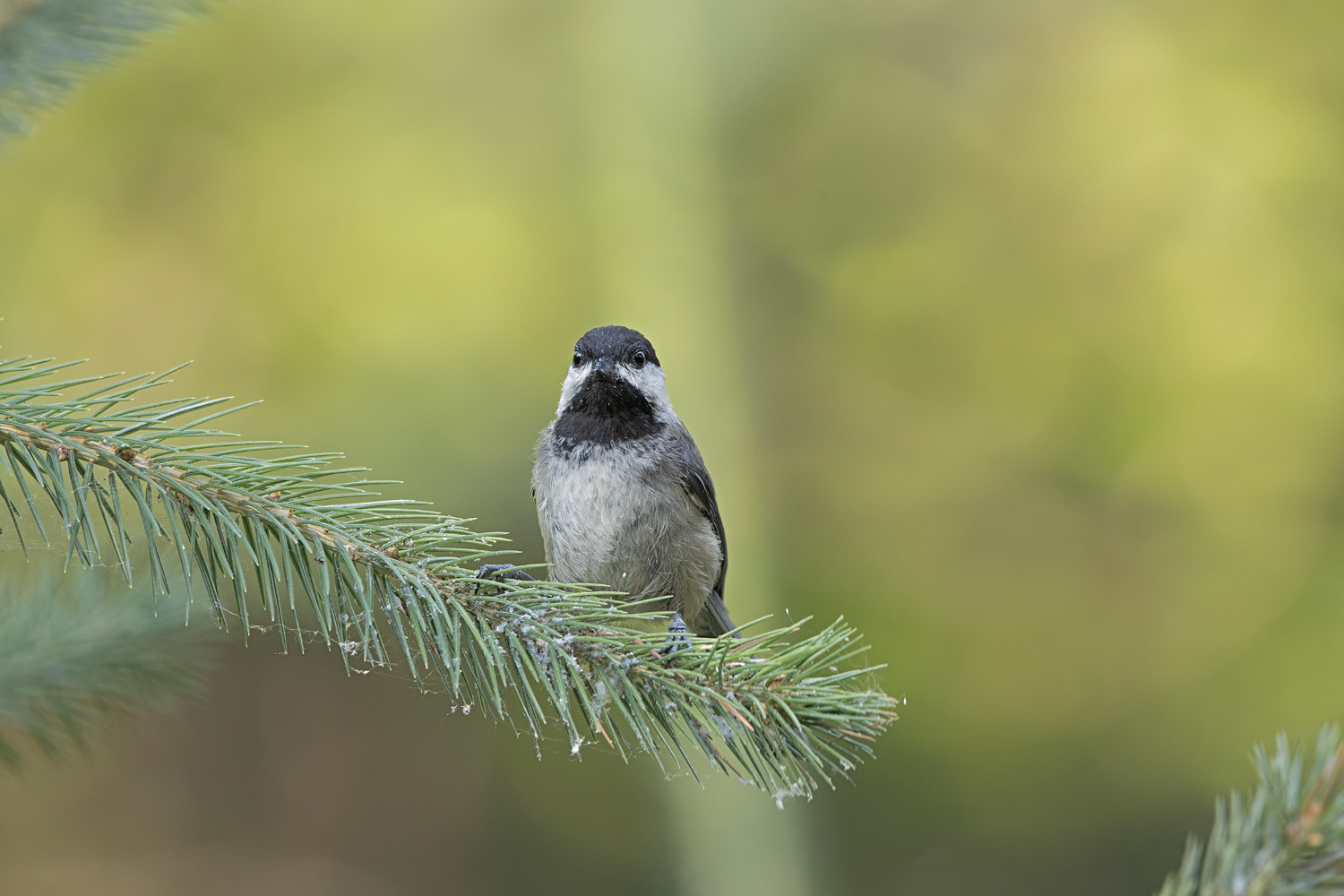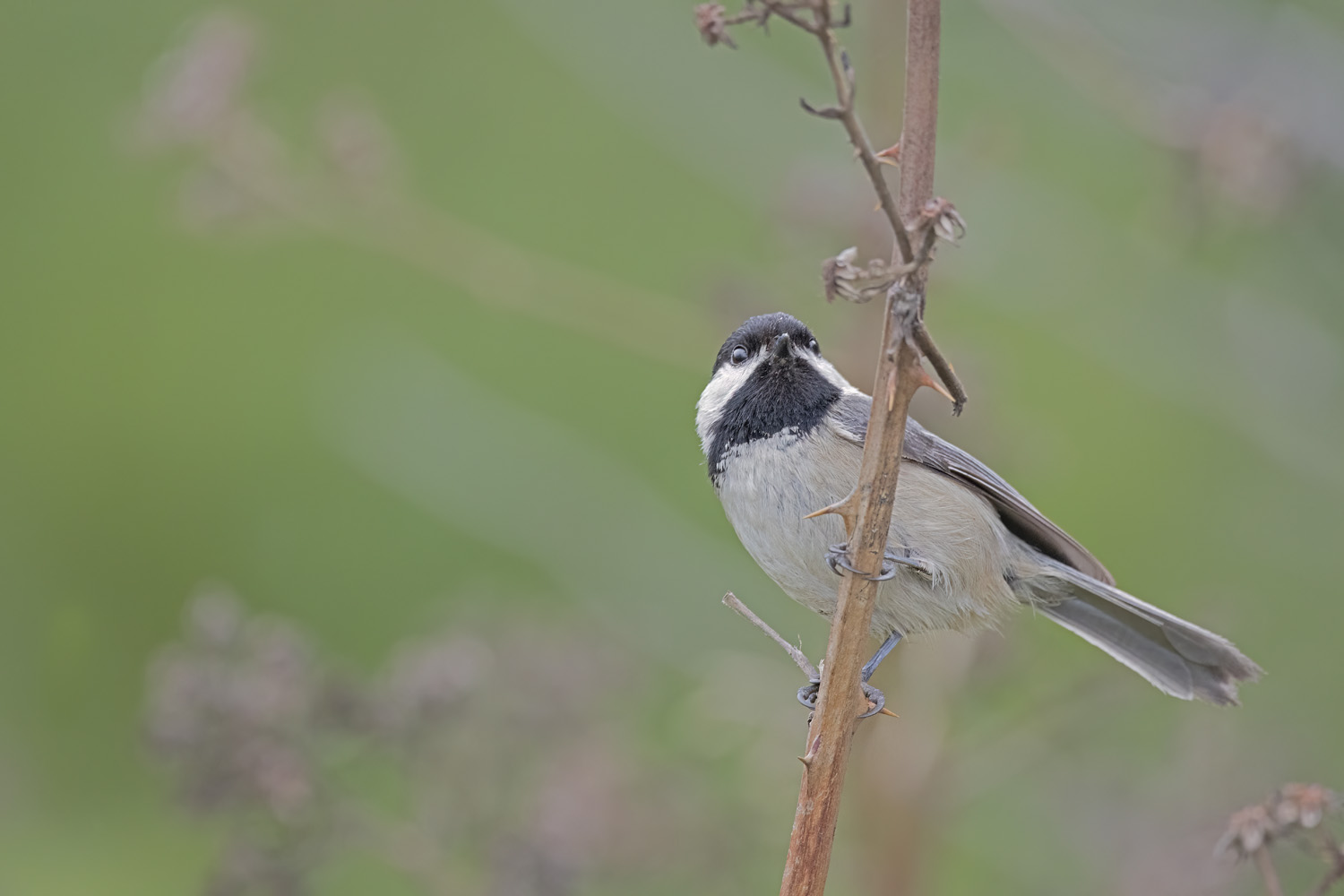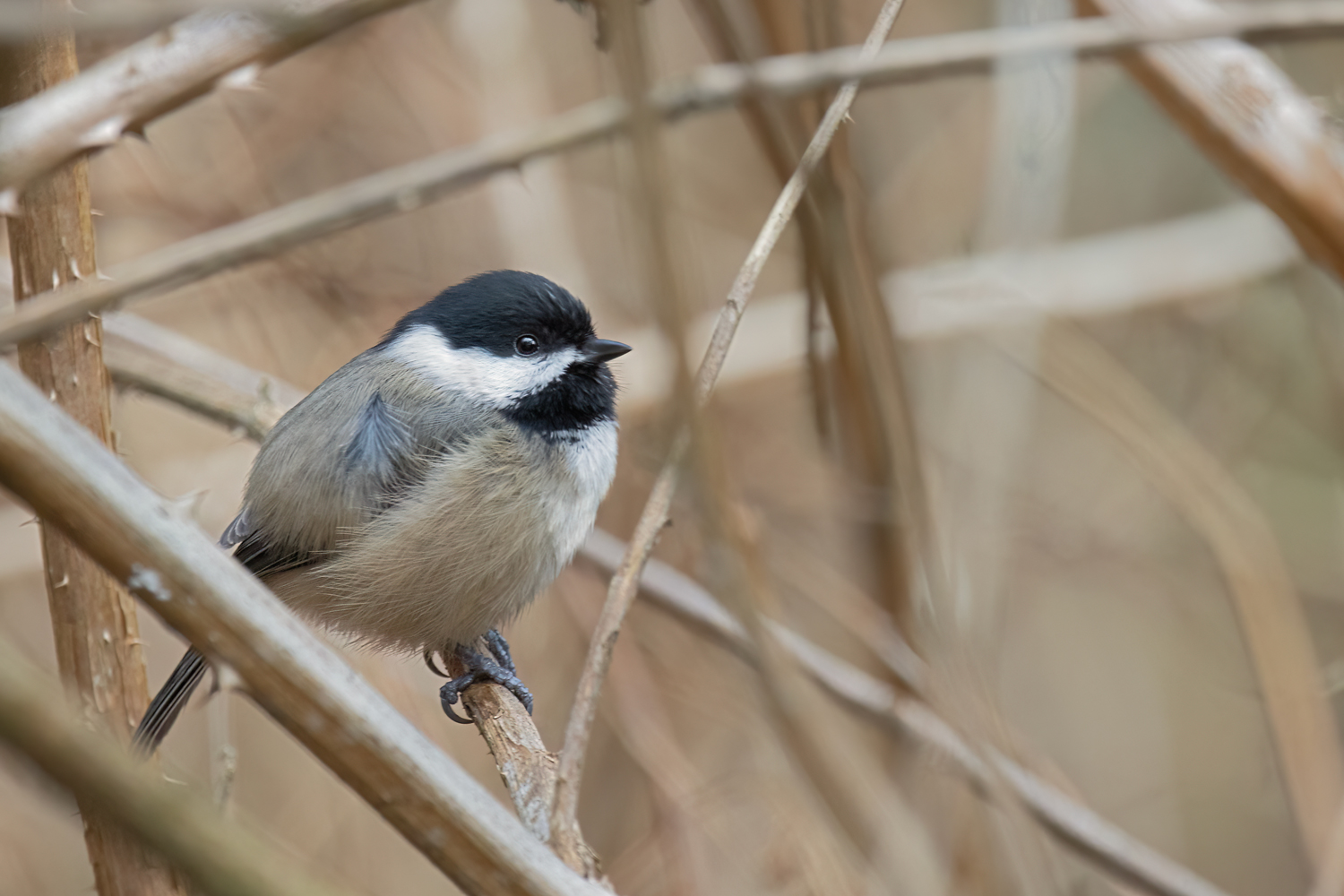There was a point in time where black-capped chickadees were my goal bird. Not because they’re that interesting or rare, but because they were just too damn fast for me to get a photo of and it irked me. How could a bird this abundant be so difficult?
Eventually, I did get some photos that I’m very happy with, but I still like the challenge of getting this small, fast bird out in the forest.
Finding Black-Capped Chickadees
It doesn’t take too long to locate these birds. They are regulars in backyards and parks, and are abundant in forests. They’re often heard before they are seen. They are especially common in deciduous growth, but I have seen large amounts in evergreen growth.
D for Danger
One of the most well-known sounds of the black-capped chickadee (and other chickadees) is their trademark “chick a dee dee dee”. This particular call means there is a threat nearby, as well as how dangerous the threat is.
The University of Washington found that chickadees have one of the most sophisticated alarm systems in nature. Different amounts of “dees” added at the end, as well as different tones, carry information about the type, size, and threat level of different predators back to the flock.
Birds that travel with chickadees, such as nuthatches and kinglets, will also recognize their calls as a sign to be careful.
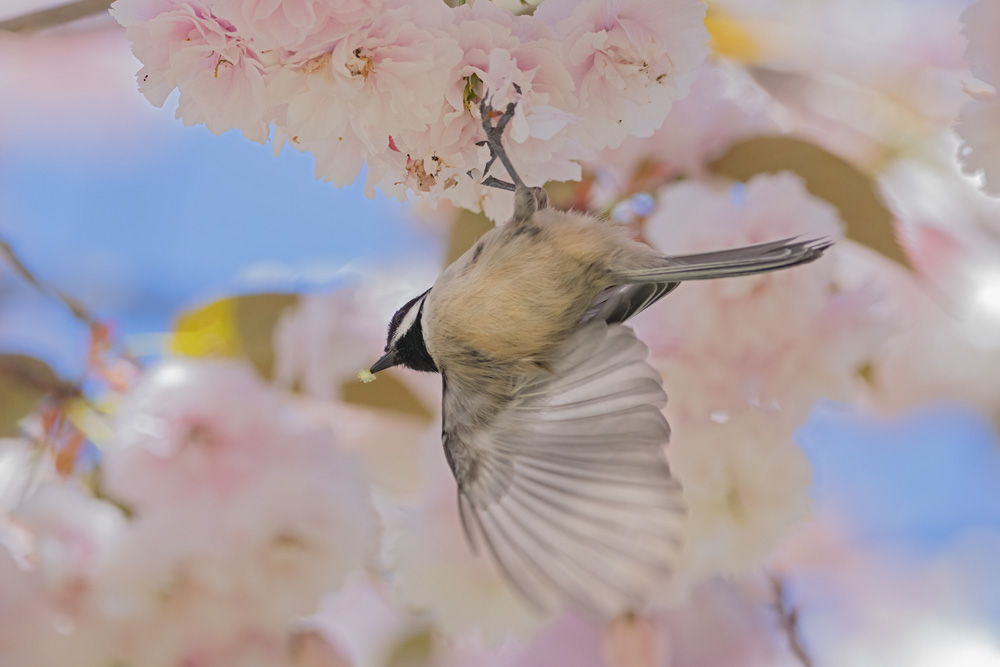
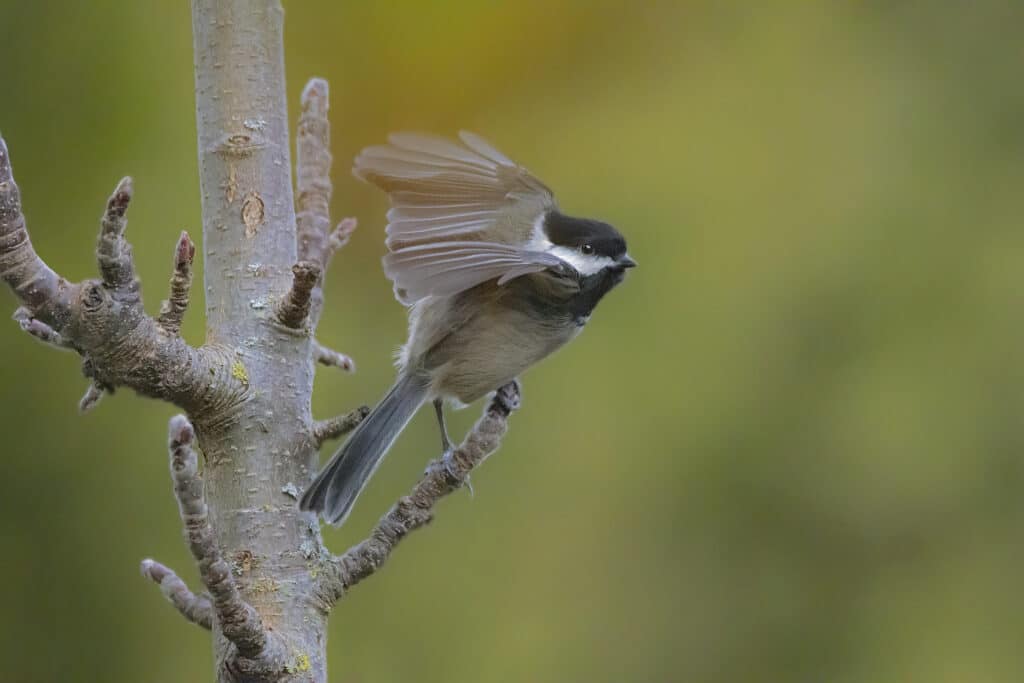
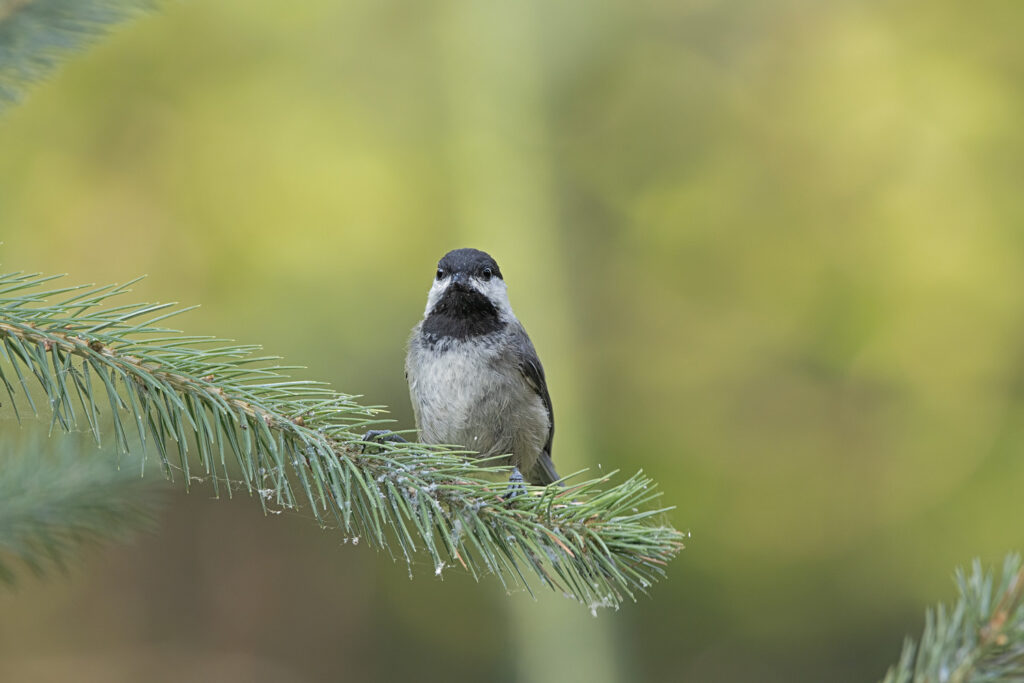
Black-Capped Chickadee Gallery
Tap the gallery to see full-size images
Sources
Like this post?
Thanks for reading! You can support me in making more posts like this by buying me a coffee, visiting my store, and subscribing to my newsletter. Follow me on Instagram for daily posts.

